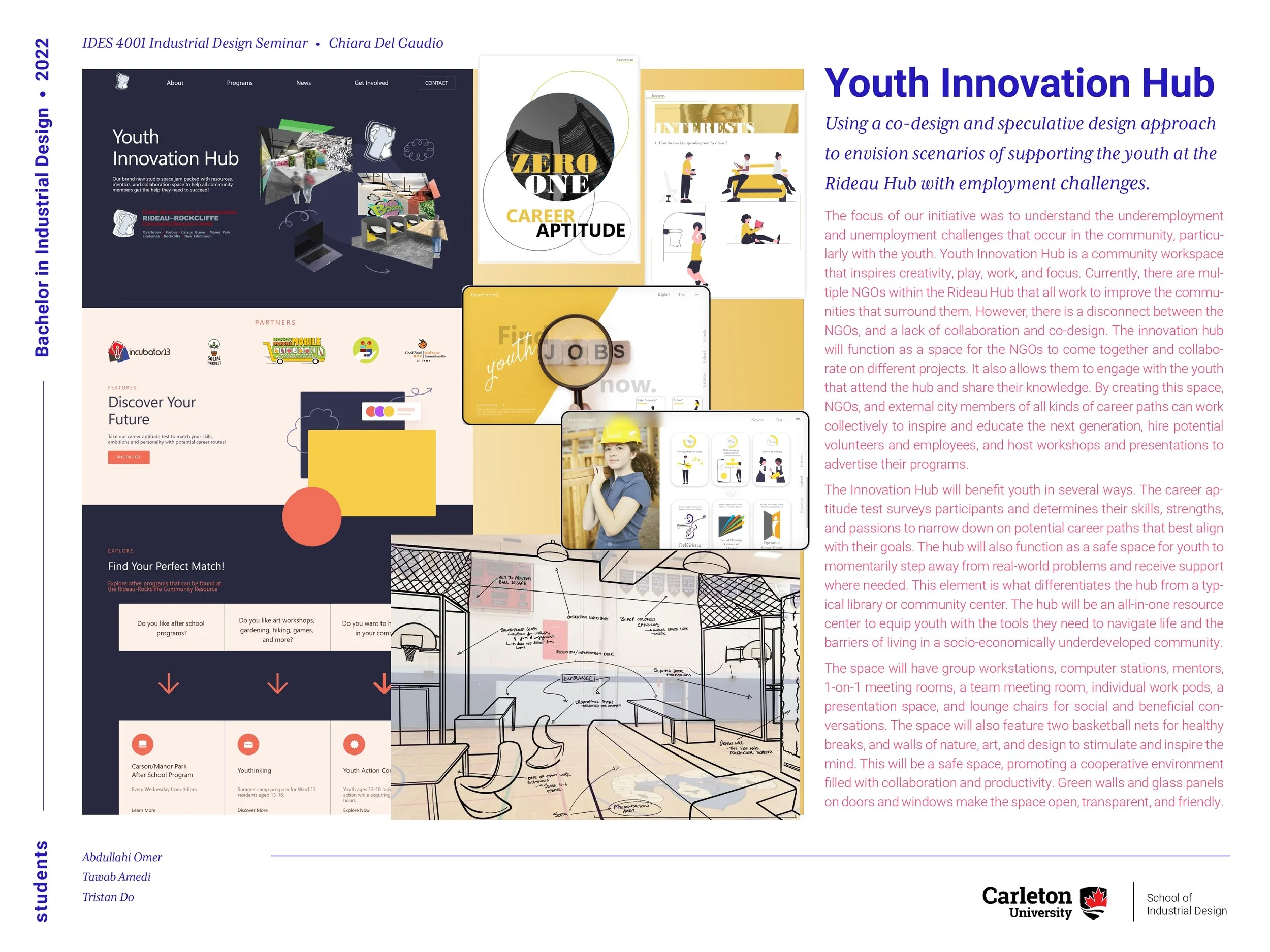Community Explorations 2
Rideau Community Hub
what could the Rideau Hub space be for its community?
Overview
The 4th-year design seminar class, taught by Chiara Del Gaudio, collaborated with the Rideau-Rockcliffe Community Resource Centre to design future scenarios for the Rideau Community Hub that express what this place and what its resources (tangible and intangible) can be and become for the local community.
The future scenarios presented a renewed understanding of the value of local resources, the role of local stakeholders, the connection between people, organizations, and the local environment, and rethought the current approach to ‘service’ and to ‘addressing basic needs’ and ‘empowering’.
keywords: community-based participatory design, alternative futures, infrastructure, commons, service design
Rideau Hub
2022
Ottawa
-
Rideau Hub is a decommissioned high school in ward 13 in Ottawa (815 St. Laurent Blvd). The different facilities of this former school building are currently rented by the school board to local NGOs seeking a place to establish themselves. As a consequence of this, at the current moment, several NGOs are located in former school classrooms and from time to time, they rent additional spaces such as an auditorium, cafeteria, music room, theatre room, gymnasium, etc.
These NGOs provide services to underserved communities, such as food security services, unemployment, immigration, digital literacy, childcare etc. They are perceived as a "safe and trusted space" by the local community, which is key when addressing the needs of the vulnerable and disadvantaged communities they serve.
In the current use of the building, it is possible to identify a traditional and conservative approach to the use of resources and to providing services (on the government side). There is no understanding of the potential that such infrastructure and environment could have on the local community. Considering this and the growing developers' landscape that has been characterizing Ottawa, there are risks to the long-term survival of the place if its true potential is not identified and communicated both to the local population – so to engage them and to the school board and local government. There is an opportunity to deeply understand and identify the Hub’s potential and to communicate its value to the greater public.
-
The students engaged in co-design and speculative/critical design approaches and focused on one of the following themes: food security, social isolation, underemployment and unemployment, and immigration challenges. The questions that guided the students in their scenario-building process were:
What could Rideau Space be?
Which kind of new role can have in the local community?
Can you envision a different future for it? What scenarios of use can you imagine for it in alignment with the existing needs of the local population, its geographical location and the different NGOs that inhabit it?
What type of new relationship between the different local actors, and local actors (including population) and the space can you envision to be meaningful for the well-being of the neighbourhood?
The students were guided by Luc Lalande (Rideau-Rockcliffe Community Resource Center) on a field visit to the Rideau Hub on November 2, 2022. They explored the Hub, collected key information, and were introduced to many of the hub’s tenants.











